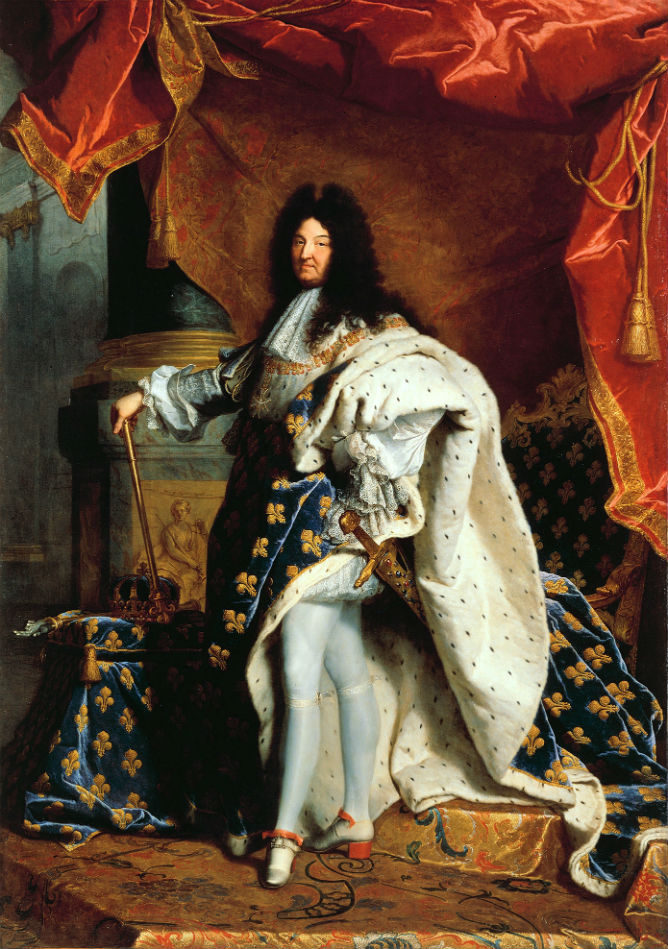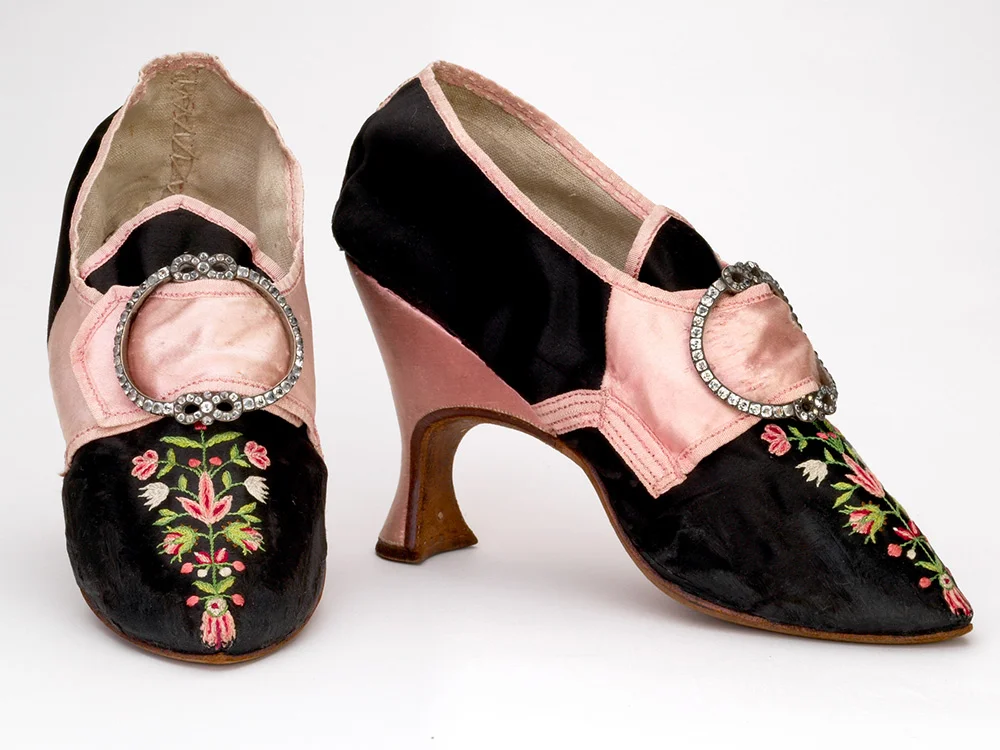Move over Paris runways, leggy glamour and glittery fashion statements: all that we now associate with high heels. Give way to humble beginnings of wearing high heels. They actually served a very practical purpose. High heels weren’t originally intended for women at all. When it comes to heels, women were the late adopters: the real fashionistas in the history of high heels were men.
Men’s Shoes

Ancient Egypt
In Ancient Egypt, about 3500 B.C. the first high heels were worn by butchers! Yes, butchers. By wearing elevated shoes, Egyptian butchers were able to walk over slaughtered animals and bloody floors without dirtying their feet. Okay. So depictions on ancient Egyptian murals also illustrate figures wearing high heels for ceremonial purposes as well.

Greece
In Ancient Greece, high-level pieces of footwear belonged to actors and the shoes were known as kothorni. They were flat shoes with wooden or cork bases up to four inches thick. The high heels were actually meant as a kind of shorthand about the social class of various characters in Greek drama and comedy. The higher the heel, the more “elevated” the character.

Persia
One of the most convincing theories about how high heels took over the world comes from shoe expert and academic Elizabeth Semmelhack, a curator at the Bata Shoe Museum in Canada. Her thinking? Persian riding shoes were the real source of the first trend.
Persian art shows that many noblemen of the medieval Persian empire wore heels as riding shoes. In 10th-century Persia, male soldiers riding horseback used heels to secure their feet in the stirrups and to give them more leverage when fighting.

Persian noblemen in the 1500s wore high heels which were often in decadent materials and bright colors. According to Semmelhack, the European royals really perked up and took notice when a Persian monarch, Shah Abbas, came to tour European courts in the 1500s wearing colorful shoes with high heels. The diplomatic gesture turned into a fashionable one, too: people saw the beautiful heeled shoes worn by the Shah and his entourage, and decided to make them their own. Those things were not only gorgeous, but made the wearer appear taller and more formidable.
Women’s Shoes

Venice
During the 1400s in Venice, women wore staggeringly high, slightly-tilted shoes with as many as 24 inches of narrowed platform heel underneath. They were called chopines and were designed to keep the mud off the more delicate ‘real’ shoes of ladies walking in the street. Their ‘real’ shoes were often made of easily-stained material like animal skin or satin. The chopine was eventually outlawed in France, for various reasons. One was that they were most often worn by prostitutes, who used them to get attention.

Japan
These utilitarian shoes are actually not just a European idea. The Japanese had them for centuries, under different names, but for the same essential idea: keeping an expensive kimono from touching the dirty ground. Apprentice geisha, known as maiko, would wear footwear called okobo, which were made of solid wooden blocks that towered above the ground. The concept of the “elevated” foot has been present in Japanese fashion for ages. The geta, a shoe made of a plank of wood with two others underneath to hold the wearer off the ground, can be up to 18cm high.

Renaissance Italy
The idea of the low sole and high heel as an option for women in Italy, seems to have made its debut on a fairly spectacular public occasion: a royal wedding. When Catherine de Medici married the Duke of Orleans in 1533, the 14-year-old bride apparently wore towering heels to look slightly more like an adult. Her shoes made a stir and the door opened to women wearing high heeled shoes that were decorative rather than utilitarian.

The Baroque Period in France
The real fashion maven was Louis XIV of France. He loved all things ornate; he was the one who made the seriously decadent Palace of Versailles his center of power.
The high heel was just the thing he wanted to look even more elaborate. Standing at just 5’4″, he adopted it enthusiastically, often with up to four inches of heel on his court shoes. He even developed a trademark of red-painted heels and ordered all male members of his court to dye their heels the same color.
The high heel went through a serious fall in fortunes after the French Revolution. People wanted nothing to do with looking like aristocrats, who became seriously unpopular.
Massachusetts and the Puritans
The New World wasn’t fond of the high heel either. Massachusetts Puritans banned high heels outright (hence no photo), thinking they were seductive and possible instruments of witchcraft. But the high heel would bounce back.

The Victorians
The Victorians were actually the ones who rediscovered the heel. During this era, a few inches of heel was considered quite enough. The focus was rather on the instep; a curved instep was supposed to show a woman’s femininity and refinement, and tiny heeled feet were the height of sophistication. It was the beginning of erotic photography, too, and high heels played a strong role in its first years. Some of the first nude photographs of women featured high heels. It was also a feature of most of the “French postcards,” as sexy photos of ladies were called at the time. The male hold on the heel was thoroughly broken.
Once they had been around for a while, high heels on women began to accumulate their own erotic, feminine significance. Some French authors in the 18th century began to talk about the “finely arched foot and delicately curved heel” as sexual attributes, and made the heel a key part of a desirable noblewoman’s body.
It was at this point that men stopped wearing the high heel; it had become a woman’s shoe, associated with impracticality and irrationality.

American Cowboys
Heels on cowboy boots were used, as they were on the Persians riding boots, to secure the foot in the stirrups. Bootmakers like Hyer and Justin developed them specifically for American cowboys and Western-style saddles. Usually the heel was put on modified European riding boots or US Cavalry boots
There are several types of heels for cowboy boots. Low heels: usually around 1 ½ inches high are ideal for ranch activities, walking, and riding. Standard heels: usually 1-inch or lower with flat bottoms are best for walking and ranch work. Spiked heels: usually 2-inches or higher with wide, flat bottoms are ideal for riding.

The 20th Century to the Present
By the 20th century, narrow high heels represented femininity; however, a thick high heel was still sometimes socially acceptable for men. Until the 1950s, shoe heels were typically made of wood. In more recent years heels were made of a variety of materials including leather, suede, and plastic.
The stiletto, the narrowest heel, was named after the slender Italian dagger of the Renaissance. The discovery of this designer shoe has been credited to Salvatore Ferragamo, Charles Jourdan or Roger Vivier.
The stiletto heel first appeared in the 1930s. The inventor of this long, often steel-spiked, thin heel remains in dispute, but today many attribute its rise in fame to Roger Vivier’s work for Christian Dior in the early 1950s.
Italian shoe designer Salvatore Ferragamo paved the way for stilettos by inventing the steel arch, seen on Marilyn Monroe’s high heeled pump, possibly enhancing her famous walk. Some historians also credit him with inventing the stiletto heel, while others credit French fashion designer Charles Jourdan who first designed shoes under the Pierre Cardin label as well as Christian Dior.
Whether you credit the discovery to Salvatore Ferragamo, Charles Jourdan or Roger Vivier, they all have a place in history. As the passion for height and sophistication live on today in most fashion houses, whether it be the red bottomed Christian Louboutin, Manolo Blahnik or your favorite brand, high heeled trends continue to be popular, creating a 34 billion U.S. dollar business this year.
